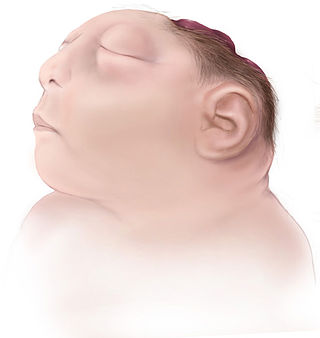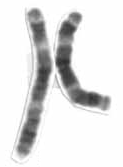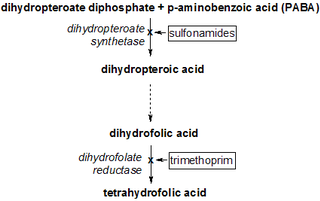Related Research Articles

Anencephaly is the absence of a major portion of the brain, skull, and scalp that occurs during embryonic development. It is a cephalic disorder that results from a neural tube defect that occurs when the rostral (head) end of the neural tube fails to close, usually between the 23rd and 26th day following conception. Strictly speaking, the Greek term translates as "without a brain", but it is accepted that children born with this disorder usually only lack a telencephalon, the largest part of the brain consisting mainly of the cerebral hemispheres, including the neocortex, which is responsible for cognition. The remaining structure is usually covered only by a thin layer of membrane—skin, bone, meninges, etc., are all lacking. With very few exceptions, infants with this disorder do not survive longer than a few hours or days after birth.
ATC code B03Antianemic preparations is a therapeutic subgroup of the Anatomical Therapeutic Chemical Classification System, a system of alphanumeric codes developed by the World Health Organization (WHO) for the classification of drugs and other medical products. Subgroup B03 is part of the anatomical group B Blood and blood forming organs.
This is a list of topics in molecular biology. See also index of biochemistry articles.

A chromosomal fragile site is a specific heritable point on a chromosome that tends to form a gap or constriction and may tend to break when the cell is exposed to partial replication stress. Based on their frequency, fragile sites are classified as "common" or "rare". To date, more than 120 fragile sites have been identified in the human genome.

Neural tube defects (NTDs) are a group of birth defects in which an opening in the spine or cranium remains from early in human development. In the third week of pregnancy called gastrulation, specialized cells on the dorsal side of the embryo begin to change shape and form the neural tube. When the neural tube does not close completely, an NTD develops.

Chromosome 1 is the designation for the largest human chromosome. Humans have two copies of chromosome 1, as they do with all of the autosomes, which are the non-sex chromosomes. Chromosome 1 spans about 249 million nucleotide base pairs, which are the basic units of information for DNA. It represents about 8% of the total DNA in human cells.

Chromosome 3 is one of the 23 pairs of chromosomes in humans. People normally have two copies of this chromosome. Chromosome 3 spans 201 million base pairs and represents about 6.5 percent of the total DNA in cells.

Chromosome 10 is one of the 23 pairs of chromosomes in humans. People normally have two copies of this chromosome. Chromosome 10 spans about 134 million base pairs and represents between 4 and 4.5 percent of the total DNA in cells.

Collagen, type I, alpha 1, also known as alpha-1 type I collagen, is a protein that in humans is encoded by the COL1A1 gene. COL1A1 encodes the major component of type I collagen, the fibrillar collagen found in most connective tissues, including cartilage.

Dihydropteroate synthase is an enzyme classified under EC 2.5.1.15. It produces dihydropteroate in bacteria, but it is not expressed in most eukaryotes including humans. This makes it a useful target for sulfonamide antibiotics, which compete with the PABA precursor.

Folate receptor 1 is a protein that in humans is encoded by the FOLR1 gene.

Fos-related antigen 1 (FRA1) is a protein that in humans is encoded by the FOSL1 gene.

Folate receptor beta is a protein that in humans is encoded by the FOLR2 gene.

Homeobox protein Hox-D12 is a protein that in humans is encoded by the HOXD12 gene.

FRA10AC1 is a protein that in humans is encoded by the FRA10AC1 gene.
Fragile site, 5-azacytidine type, common, fra(1)(q12) is a protein that in humans is encoded by the FRA1J gene.

Folate receptor gamma is a protein that in humans is encoded by the FOLR3 gene. It is involved in up-take of folic acid.
Fragile site, aphidicolin type, common, fra(3)(p24.2) is a protein that in humans is encoded by the FRA3A gene.
FRAXD or FRAXD gene is a gene symbol for fragile site, aphidicolin type, common, fra(X)(q27.2) D. The locus of the gene is located on fragile site of the q arm of chromosome X at position 27.2. It is used for gene testing in Homo sapiens.
References
- ↑ "Human PubMed Reference:". National Center for Biotechnology Information, U.S. National Library of Medicine.
- ↑ "Entrez Gene: Fragile site, folic acid type, rare, fra(2)(q13)" . Retrieved 2017-04-04.